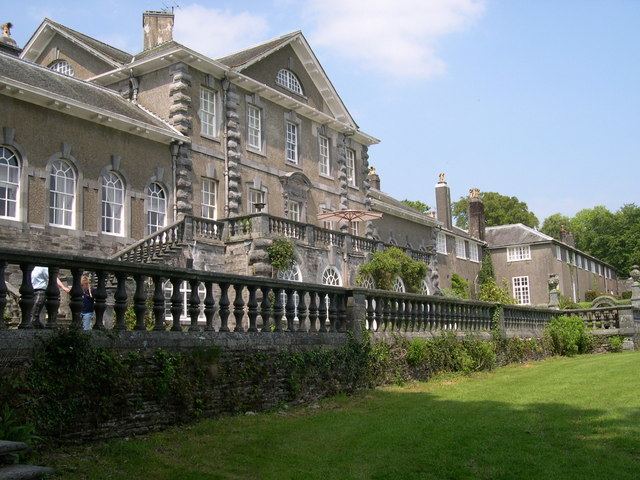Town or city Boncath Completed 1799 Phone +44 1239 841610 | Country Wales Opened 1799 Architect John Nash | |
 | ||
Address Unnamed Rd, Boncath, SA37 0HQ, United Kingdom Hours Open today · 10AM–5PMSaturday10AM–5PMSundayClosedMondayClosedTuesdayClosedWednesdayClosedThursday10AM–5PMFriday10AM–5PM Similar Llanerchaeron, St Padrig's Church - Llanbadrig, Picton Castle, Cilgerran Castle, National Coracle Centre | ||
Ffynone (Welsh: Ffynnonau) is a mansion and estate near Boncath, Pembrokeshire, Wales, in the parish of Manordeifi. The original Georgian design was by architect John Nash and later remodelled by Inigo Thomas.
Contents
History
The name predates the mansion and its Welsh name, Ffynnonau reflects the existence of a number of wells in the district.
The Ffynone estate belonged at one time to the Morgan family of Blaenbwlan, from whom it was purchased by Captain Stephen Colby in 1752. The house, completed in 1799, was repaired in 1828 by W Hoare and Son of Lawrenny. In the 1830s the estate extended to 237 acres in Manordeifi parish with further lands in adjacent parishes. The parkland around the house was some 30 acres. There were many additions and improvements over future years to both house and estate.
The property was passed down the Colby family to John Vaughan Colby, whose wife in 1902 commissioned architect and garden designer Inigo Thomas to remodel the house and lay out the terraced gardens, which was completed in 1907.
John Vaughan died in 1919 and, having no sons, left the estate to his daughter Aline Margaret, who had married Captain Cecil John Herbert Spence-Jones, son of the Dean of Gloucester, in 1908; the marriage was a notable occasion, reported in great detail and an occasion for local celebration, despite there being no guests at the wedding and no reception owing to the bride's mother's state of health. Spence took the additional surname of Colby by royal licence in 1920 and subsequently sold the property in 1927 to a Glamorgan businessman.
The house, in 20 acres of woodland, was bought and restored from 1988 onwards by Owen Lloyd George, 3rd Earl Lloyd-George of Dwyfor and his wife, who are credited with saving the house. After the death of the 3rd Earl in 2010 the house was put up for sale with an asking price of £2.5 million. It remains (2013) in the Lloyd George family.
The estate records (to 1919) are held at the National Library of Wales.
Architecture
John Nash was commissioned to design the house in the early 1790s; construction work began in 1794 and was completed by 1799. Materials included locally quarried stone as well as from other parts of Britain. The house was laid out to a classical Georgian plan. 60,000 trees were sourced from John Mackie, a Norwich nursery man, and hundreds of tons of topsoil were brought in. Inigo Thomas, in contrast, remodelled the house in the style of an Italian palazzo. He added the east and west wings, creating a library, ornate dining room and music room with a cross vaulted tunnel roof.
The mansion itself is Grade I-listed, while a number of elements on the estate are listed Grade I, II* or II. They are:
